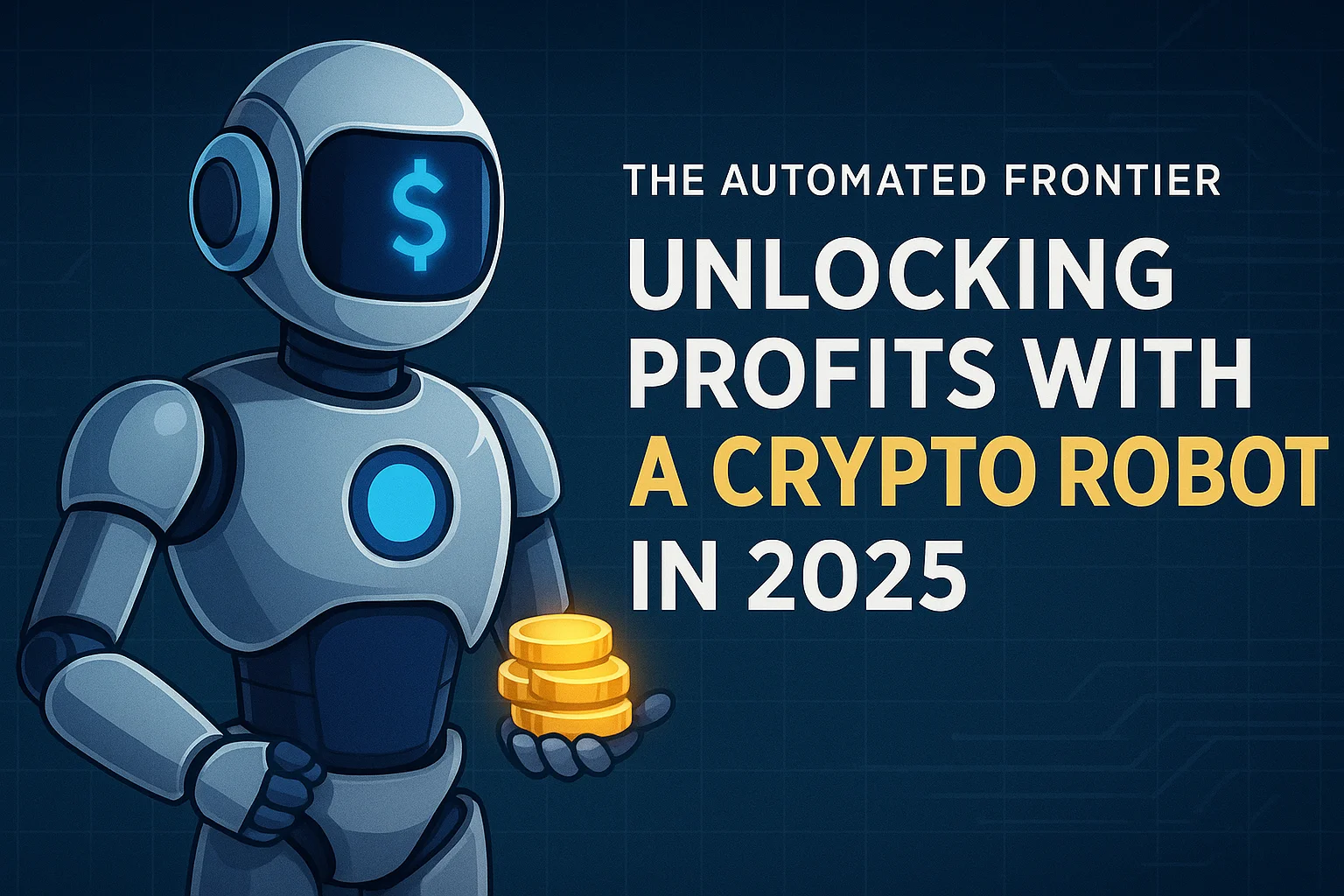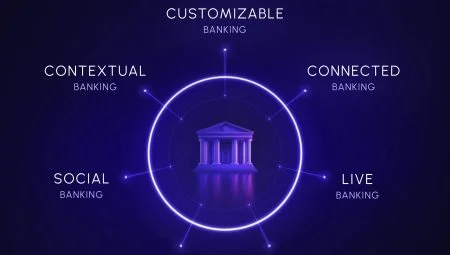The cryptocurrency market never sleeps. With its notorious volatility and 24/7 trading cycles, it presents both immense opportunities and daunting challenges for investors. This relentless pace has fueled the rise of the crypto robot – automated trading software designed to execute trades on your behalf. In 2025, as digital assets continue to mature and AI technologies advance, the allure of using a crypto robot to potentially capitalize on market movements without constant manual oversight is stronger than ever.
But what exactly is a crypto robot, and can it truly deliver consistent profits? This comprehensive guide will demystify automated crypto trading, exploring how these bots work, their potential benefits, and, crucially, the significant risks involved. Our goal is to provide you with the expert insights needed to make informed decisions in the evolving landscape of automated crypto investing.
What is a Crypto Robot? (Automated Crypto Trading Explained)
A crypto robot, often referred to as a crypto trading bot or simply a crypto bot, is an automated software program designed to interact directly with cryptocurrency exchanges and execute trades on behalf of the user. These bots operate based on predefined rules, algorithms, and trading strategies, allowing them to monitor market conditions, analyze data, and perform buy or sell orders far faster and more consistently than a human trader could.
How Do Crypto Robots Work? The Engine Behind Automated Trading
At its core, a crypto robot functions by leveraging Application Programming Interfaces (APIs) provided by cryptocurrency exchanges. These APIs allow the bot to securely communicate with your exchange account (with permissions typically limited to trading, not withdrawals).
Here’s a breakdown of the typical workflow:
1. Connecting to Exchanges via API Keys
To operate, you connect your crypto robot to your chosen cryptocurrency exchange(s) using unique API keys. These keys are like digital credentials that grant the bot permission to view your balance, place orders, and manage trades within your account, without ever needing access to your withdrawal functions. This is a critical security consideration; always ensure your bot platform uses secure, encrypted API key storage.
2. Algorithmic Trading Strategies
The heart of any crypto robot is its underlying algorithm and the trading strategy it’s programmed to follow. These strategies can range from simple to highly complex:
- Rule-Based Strategies: The bot executes trades when specific conditions are met (e.g., “If Bitcoin price drops by 3% within 5 minutes, buy X amount”).
- Technical Analysis Indicators: Many bots are programmed to react to various technical indicators like Moving Averages (MA), Relative Strength Index (RSI), Bollinger Bands, or MACD. They can identify patterns and execute trades based on these signals.
- Arbitrage: Some bots identify price discrepancies for the same asset across different exchanges and attempt to profit by buying low on one exchange and selling high on another almost simultaneously.
- Market Making: These bots place both buy and sell orders close to the current market price, profiting from the bid-ask spread.
- AI and Machine Learning (Emerging in 2025): More advanced crypto robots are now integrating AI and machine learning to analyze vast amounts of data, predict market movements, and adapt strategies in real-time, moving beyond static rules.
3. Continuous Market Monitoring and Execution
Once configured, the crypto robot continuously monitors the cryptocurrency markets 24/7. When the predefined conditions of its strategy are met, it automatically executes trades. This eliminates emotional biases, human error, and the need for constant manual oversight, allowing it to capitalize on fleeting opportunities.
Types of Crypto Robot Strategies You Might Encounter
The world of crypto robot trading encompasses various strategies, each suited for different market conditions and risk appetites:
1. Grid Trading Bots
- How it Works: These bots place a series of buy and sell orders at predetermined price intervals above and below a set price. They profit from small price fluctuations within a defined range.
- Best For: Ranging (sideways) markets.
- Risk: Can incur losses if the price breaks out of the defined grid range significantly.
2. Arbitrage Bots
- How it Works: Exploits price differences for the same cryptocurrency across different exchanges. The bot simultaneously buys on one exchange and sells on another to lock in a small profit.
- Best For: Markets with high volume and frequent, even small, price discrepancies.
- Risk: Requires extremely fast execution and significant capital. Slippage and transaction fees can eat into profits.
3. DCA (Dollar-Cost Averaging) Bots
- How it Works: Instead of a single large investment, the bot buys a fixed amount of cryptocurrency at regular intervals, regardless of price. This averages out the purchase price over time.
- Best For: Long-term accumulation and reducing the impact of volatility.
- Risk: Not designed for quick profits; requires patience.
4. Market Making Bots
- How it Works: These bots place both limit buy and limit sell orders for a cryptocurrency, aiming to profit from the spread between the buy and sell prices. They add liquidity to the market.
- Best For: High-volume, relatively stable markets.
- Risk: Can incur losses if there’s a sudden large price movement against the bot’s position.
5. Trend-Following Bots
- How it Works: These bots identify and follow market trends, buying when an uptrend is detected and selling when a downtrend begins.
- Best For: Trending markets (either up or down).
- Risk: Can perform poorly in choppy or ranging markets due to false signals.
The Alluring Promises of a Crypto Robot
The appeal of using a crypto robot is undeniable, offering several potential advantages:
- 24/7 Operation: Crypto markets are open continuously. A bot can trade around the clock, seizing opportunities even while you sleep.
- Emotionless Trading: Bots eliminate human emotions like fear and greed, which often lead to impulsive and detrimental trading decisions. They strictly follow their programmed logic.
- Speed and Efficiency: Bots can execute trades almost instantaneously, reacting to market changes much faster than any human, which is crucial for high-frequency strategies like arbitrage.
- Backtesting and Optimization: Many platforms allow you to backtest strategies against historical data, giving you an idea of how a bot might have performed in the past. This allows for optimization before live deployment.
- Diversification of Strategies: You can run multiple bots with different strategies across various assets, potentially diversifying your risk and increasing profit opportunities.
The Significant Risks & Realities of Using a Crypto Robot
Despite the alluring promises, using a crypto robot comes with substantial risks that beginners often underestimate. It’s crucial to approach them with caution and a clear understanding of these realities.
1. Market Volatility & Unpredictability
Crypto markets are highly volatile. A bot’s strategy, optimized for certain conditions, can quickly become unprofitable or even lead to significant losses during unexpected market crashes, flash dips, or “black swan” events. No bot can perfectly predict the future.
2. Technical Glitches and Bugs
Software isn’t perfect. Bugs in the bot’s code, API connection issues, or exchange outages can cause unexpected behavior, missed trades, or even incorrect trades that lead to losses.
3. Scams and Unrealistic Promises
The automated trading space is unfortunately rife with scams promising guaranteed high returns with little effort. Many “get rich quick” schemes involving crypto robot platforms are fraudulent. Always be skeptical of unverified claims.
4. Complexity and Configuration
Setting up and optimizing a crypto robot requires a good understanding of trading strategies, technical indicators, and risk management. It’s not a “set it and forget it” solution; constant monitoring and adjustments are often necessary.
5. Security Concerns
Connecting a bot to your exchange via API keys introduces a security risk. If the bot platform is compromised, your exchange account could be vulnerable. Always use strong passwords, 2FA, and only grant necessary API permissions.
6. Lack of Adaptability to Novel Events
While some AI bots are learning, most rule-based bots cannot adapt to unprecedented market events or sudden regulatory changes that might render their programmed logic obsolete or detrimental. Human discretion is still invaluable.
Key Considerations Before Diving into a Crypto Robot in 2025
Before you invest your capital (or even time) into a crypto robot, ask yourself these critical questions:
- Understand the Strategy: Do you fully comprehend the bot’s underlying trading strategy, including its entry/exit points, risk parameters, and ideal market conditions?
- Risk Management: How does the bot manage risk? Does it have stop-loss mechanisms? How much capital are you comfortable losing?
- Platform Reputation and Security: Research the crypto robot platform thoroughly. Look for transparent track records, strong security measures (2FA, encryption), and positive user reviews from reputable sources.
- Costs: Are there subscription fees, performance fees, or other hidden costs associated with using the bot?
- Backtesting vs. Live Trading: Backtesting can provide insights, but past performance is never a guarantee of future results. Real-world market conditions are dynamic.
- Your Time Commitment: Even with automation, you’ll need to monitor your bot, adjust strategies, and stay informed about market news. It’s not passive income.
- Regulation (Evolving in 2025): The regulatory landscape for crypto and automated trading is still developing. Be aware of rules in your jurisdiction that might impact bot usage or tax implications.
Pro Tips for Navigating the Crypto Robot Landscape
- Start Small, Test Thoroughly: Never deploy a crypto robot with significant capital from day one. Begin with a small amount and thoroughly test its performance in live market conditions.
- Understand Market Cycles: No single bot strategy works in all market conditions. A grid bot excels in ranging markets, but may struggle in strong trends. Know when to pause or switch strategies.
- Prioritize Security: Use strong, unique passwords for your bot platform and exchange accounts. Enable 2-Factor Authentication (2FA) everywhere. Restrict API key permissions to only what’s necessary for trading.
- Continuous Learning: The crypto market evolves rapidly. Stay updated on new strategies, market trends, and bot technologies. Automation is a tool, not a substitute for knowledge.
- Beware of “Too Good to Be True” Promises: If a crypto robot promises guaranteed daily profits or extremely high, consistent returns, it’s almost certainly a scam. Realistic expectations are key.
- Implement Stop Losses (Manually or Via Bot): Even if your bot doesn’t automatically implement it, consider setting stop-loss orders on your exchange to limit potential losses in case of unexpected market moves.
Frequently Asked Questions (FAQ)
Q1: Is a crypto robot suitable for beginners?
A1: While a crypto robot can simplify trade execution, it’s generally not recommended for complete beginners without a foundational understanding of cryptocurrency markets, trading principles, and risk management. Effective use of a bot requires knowledge to choose the right strategy, configure it properly, and understand when to intervene or pause it. Beginners might be better off learning manual trading basics first.
Q2: Can a crypto robot make me rich quickly?
A2: No, a crypto robot is not a “get rich quick” scheme. While bots can help automate trading and potentially generate profits, they are susceptible to market volatility, technical issues, and flawed strategies. Consistent, high returns are never guaranteed, and significant losses are possible. Be extremely wary of any platform promising unrealistic returns.
Q3: Do I need to keep my computer on for a crypto robot to run?
A3: It depends on the type of crypto robot. If you’re running the bot software directly on your own computer, then yes, your computer typically needs to stay on and connected to the internet. However, many popular crypto robot platforms are cloud-based, meaning the bot runs on the provider’s servers, and you do not need to keep your own computer on once it’s configured.
Q4: How much does a crypto robot cost?
A4: The cost of a crypto robot varies widely. Some platforms offer free basic versions, while others charge monthly or annual subscription fees (ranging from $20 to $500+ per month, depending on features and trading volume). Some advanced bots or managed services might also charge a percentage of your profits. Be sure to understand all associated costs before committing.
Conclusion
The evolution of the crypto robot offers a fascinating glimpse into the future of automated finance. While these tools present compelling advantages like 24/7 operation and emotionless execution, they are not a guaranteed path to riches and come with inherent risks. In 2025, successful deployment of a crypto robot demands a combination of strategic understanding, diligent risk management, and continuous monitoring. Approach with caution, do your homework, and remember that even the most advanced automation requires intelligent human oversight.
Have you ever used a crypto robot? What was your experience like? Share your thoughts and insights in the comments below!



